Movie 1 – xObs-yObs Intensity Movie from TObs=2000M-2400M
This movie shows the simulation region projected onto an observer plane 80 gravitational radii (M) on a side (with axes in units of the simulation datablock spatial step xStep = yStep = 80M/256) looking directly along the jet axis. Emission from the accretion disk (seen rotating counterclockwise) dominates jet emission in this zero opacity case with optically thin synchrotron emissivity j ~ ug bμbμ (where ug is the gas internal energy).
Movie 2 – Black Hole/Accretion Disk from Rotating Vantage Points
These images show intensity maps of emissivity j ~ bμbμ viewed along the jet axis then almost at a right inclination angle from the jet axis. In the latter image, horizon scale features are visible.
Movie 3 – Jet intensity Movie Viewed from 30°
This movie is shown with the jet axis from a large inclination angle from the (parallel) lines of sight to emphasize the jet. The jet emissivity is j ~ D2.5bμbμ , where D is the Doppler factor, at observer angle 30° and observer times TObs=1600M-2500M. Regions above 0.005 the maximum intensity are white.
Movie 4 – Intensity Map for j ~ D2.5bμbμ Viewed 15° from Jet Axis
The images are shown here in rainbow and disk masked (by setting the middle fifth band of the simulated region in the direction away from the observer to zero) to accentuate coherent motion of high intensity regions of the jet outflow.
Movie 5 – Azimuthal Variation
Intensity map movies for j ~ D2.5bμbμ with 30° viewing angle. These four panel image maps simultaneously show the jet from vantage points tilted 15° in the polar direction from the jet axis at varying azimuths 0° (top left), 90° (top right), 180° (bottom left) and 270° (bottom right).
Movies 6A and 6B – Energy Density Cuts
In the 11-frame movies of j~(bμ bμ).75 from (θObs ,ϕObs) = (15°,0°) (top), the energy density per unit mass cut ug/ρ >0.1 is made to exclude points outside the contour shown in the bottom movie. I use tStep=56M = 21 days for M based on the gravitational radius of M87.
Movie 7 – Corkscrewing Jet
A movie derived from a model of observations of the M87 jet by the VLA with 21 days (= 56 rG(MM87)/c) using emissivity prescription j=(bμbμ) 3/4 and a geometric cut of simulation regions |z|<20M and 0.5|z|<x2+y2 to make jet substructure prominent. Note the helical magnetic field structure corkscrewing outward (as seen in some 43 GHz VLA observations) is indicative of a magnetic Kelvin-Helmholtz instability.
Movie 8 – Current Density Model Jet
In this model, a synchrotron emissivity
j~Pg b(1+p)/2 ν(p-1)/2
is used where the pressure Pg due to gas radiating at the observed frequency is related to dissipation by setting
Pg ~ (Dx By -Dy Bx )2z ,
where the z-component of the curl of the magnetic field is the current density along the jet axis. The movie is viewed from (θObs ,ϕObs) = (15°,0°).
Movie 9 – Alpha Model Jet
Movie 10 – Shear Model Jet
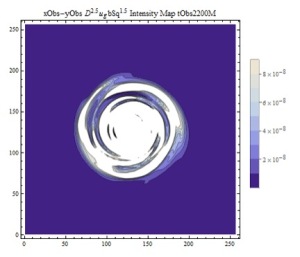
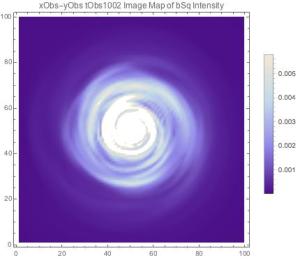
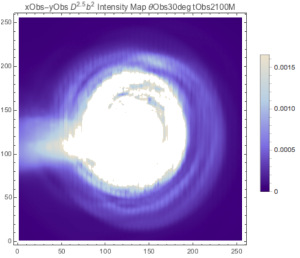

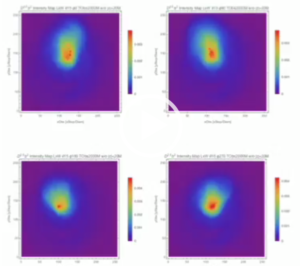
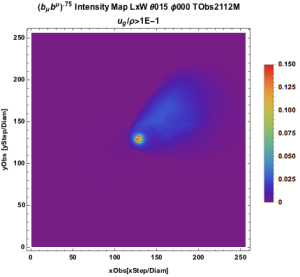
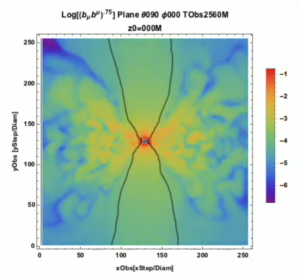
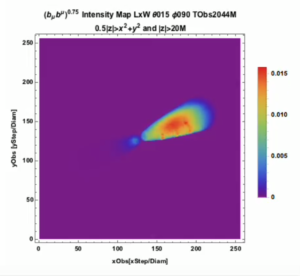
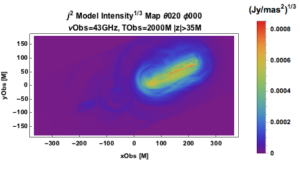
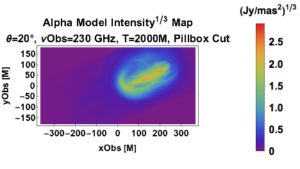
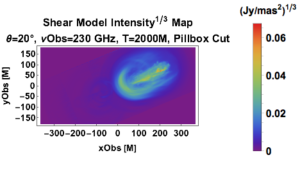
It was widely believed that accretion disks sat like flat plates along the outer edges of black holes and that jets shot straight out perpendicularly.
This theory explains the extraction of energy from magnetic fields around an accretion disk, which are dragged and twisted by the spin of the black hole.
There are two main theories for how energy is transferred from a black hole to a jet.
It’s a good article. This website has lots of interesting things, it made it easier for me in many ways.